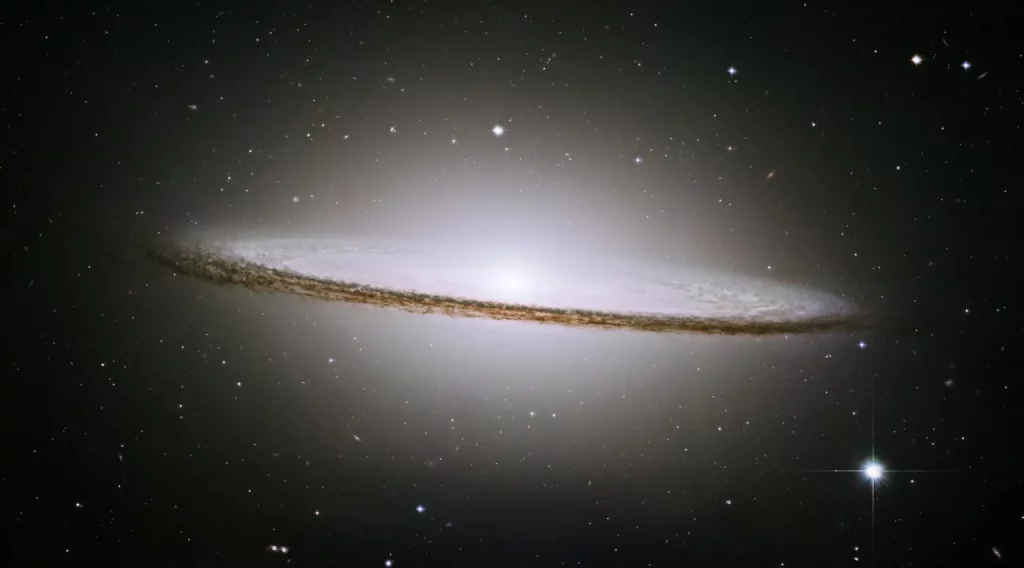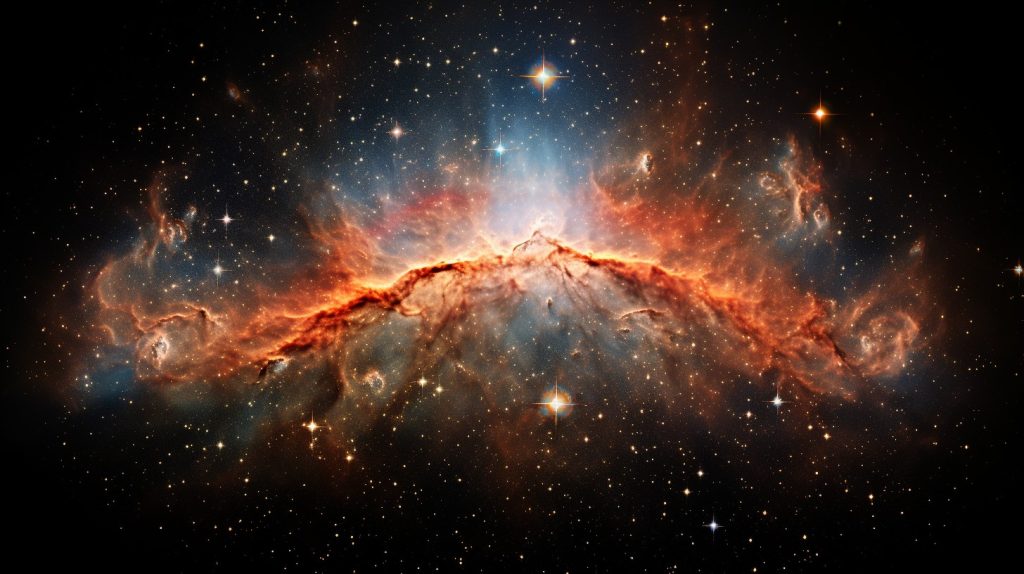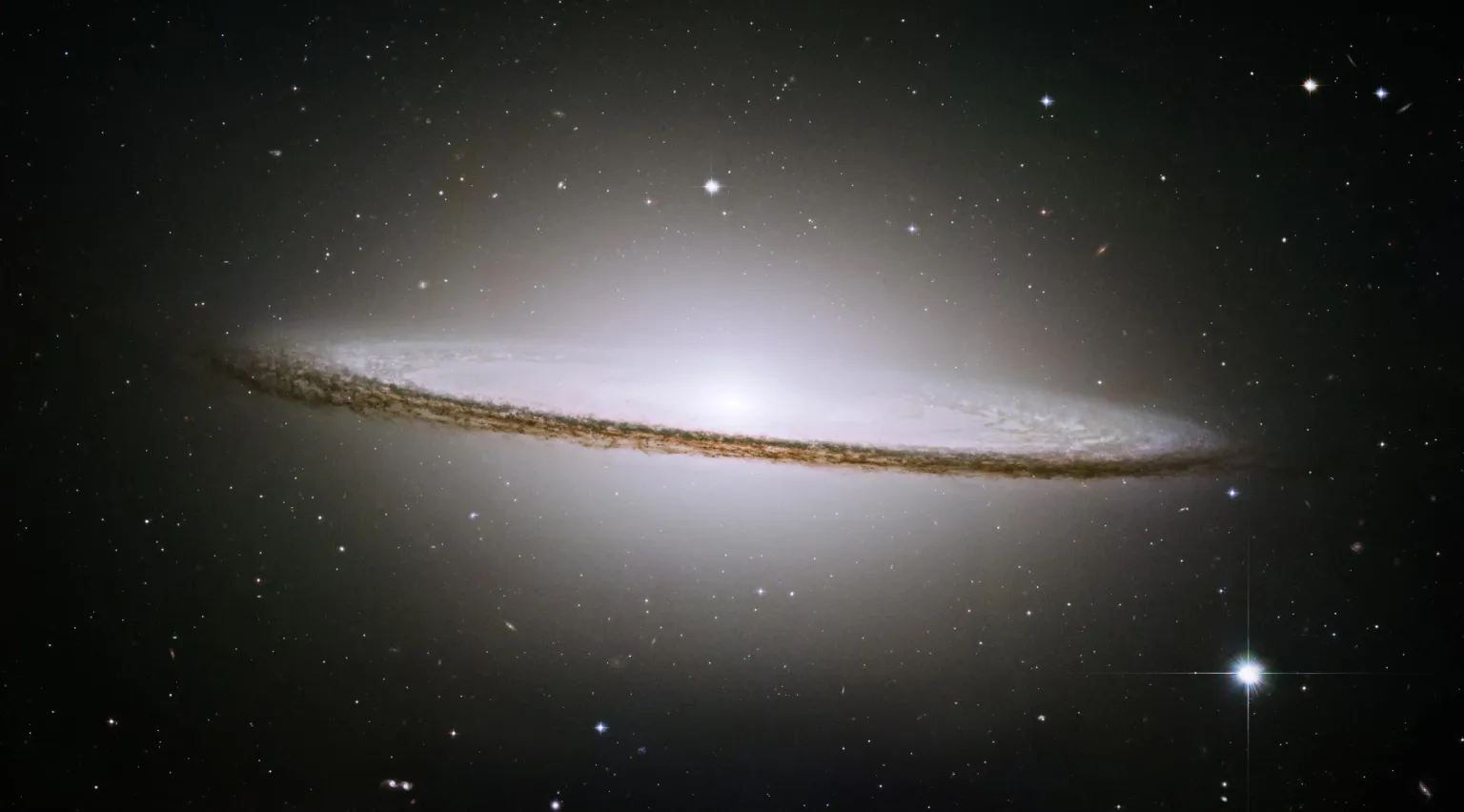Floating through the constellation, Virgo is a small galaxy with a very big wow factor. Nicknamed The Sombrero due to its resemblance to the iconic Mexican hat, this galaxy captivates astronomers with its striking beauty and unique structure.
Unlike the flat, spiral discs of galaxies like our Milky Way, the appropriately named Sombrero Galaxy is a brilliant, bulge-dominated galaxy shaped more like a sphere surrounded by a ring of dust.
Don’t let its compact size fool you – over 800 billion stars call this galaxy home, making it a perfect laboratory for studying stellar populations and galactic evolution on a manageable scale.
In this article, we’ll discuss how its odd shape and contents are helping astronomers untangle the mysteries of galaxy formation and help uncover what makes the Sombrero Galaxy one of the most thrilling cosmic destinations in our galactic neighborhood.

What Is the Sombrero Galaxy?
The majestic Sombrero Galaxy earns its nickname from its appearance, which resembles a wide-brimmed Mexican hat. From our earthly view, it presents itself nearly edge-on, allowing us to see its thin, disk-like structure punctuated by darker dust lanes.
Spanning about 50,000 light-years across, Sombrero is an unbarred spiral galaxy composed of a bright, bulbous core surrounded by subtle swirling arms. Billions of stars, glowing pink star-forming regions, and illuminated clouds of gas sprinkle its halo and disk.
When was the Sombrero Galaxy discovered? The Sombrero Galaxy was discovered on May 11th, 1781. The first one to discover the said galaxy was the French astronomer and comet hunter Pierre Méchain.
Discovery and Historical Significance
Early observations and discovery
The object of our fascination resides in the cosmic tapestry, revealing itself through a series of early observations. The pioneers who first glimpsed this cosmic wonder were diligent astronomers, scanning the night sky with a mix of curiosity and determination.
Their patient observations identified a celestial phenomenon that would later unveil layers of knowledge about our galactic neighborhood.
Role in understanding galactic morphology
This celestial entity plays a pivotal role in unraveling the intricate design of our Milky Way. Its presence and characteristics provide astronomers with valuable clues about our galaxy’s morphology—structure, and form.
By studying this cosmic feature, astronomers have been able to create detailed maps of the Milky Way’s architecture.
The information gleaned sheds light on the distribution of stars, nebulae, and other celestial bodies, contributing to a comprehensive understanding of our galactic home.
Sombrero Galaxy Size
Physical Dimensions
In the grand tapestry of the cosmos, this celestial entity stands out not just for its beauty but also for its impressive physical dimensions.
When we talk about size, we’re looking at a diameter that stretches across vast distances. Its thickness adds another dimension to its presence in the cosmic landscape.
Comparison with other galaxies
When we play the cosmic game of which one is a larger galaxy, the celestial marvel doesn’t shy away from the competition.
In the realm of galaxies, it holds its ground with a size that places it among the stellar giants of the universe. While each galaxy has its unique charm, our focus on this particular one allows us to appreciate its place in the cosmic size hierarchy.
Significance in the cosmic scale
Now, let’s zoom out and ponder the broader perspective—the cosmic scale. In this vast arena of galaxies, stars, and cosmic wonders, our celestial marvel assumes a role of significance.
Its size, while just a pixel in the immense canvas of the universe, provides a valuable point of reference.
Galactic neighborhood context
Within the cosmic neighborhood, the dimensions of this celestial wonder create a sense of scale for astronomers. It allows them to contextualize their place in galactic dance, offering insights into the broader patterns and relationships that govern the cosmic choreography.
Its significance on the cosmic scale extends beyond its individual beauty, providing a valuable frame of reference for astronomers seeking to comprehend the vastness of our universe.
Structure of the Sombrero
Classification of the Sombrero Galaxy
The Sombrero Galaxy, also known as M104, falls under the classification of an unbarred spiral galaxy. This categorization is based on its distinct structure, which lacks a central bar commonly observed in barred spiral galaxies.
Absence of a central bar
Unbarred spiral galaxies, like the Sombrero, are characterized by a central region without a prominent elongated bar structure.
As in the case of this galaxy, careful observations have revealed the absence of a pronounced bar across its central bulge. This differentiates it from barred spiral galaxies, where a central bar is a prominent feature extending from the nucleus.
Influence on galaxy dynamics
The presence or absence of a central bar significantly influences the dynamics of a galaxy. Unbarred spiral galaxies like the Sombrero typically exhibit a smoother and more symmetric distribution of stars in their central regions.
Without the gravitational influence of a central bar, the rotation of the galaxy is influenced predominantly by the combined gravitational forces of stars and dark matter.
Importance of symmetry
The lack of a central bar in the galaxy contributes to the overall symmetry of its spiral arms and central structure.
This symmetry has implications for the stability of the galaxy, affecting how stars move and interact within its gravitational field. The absence of a central bar simplifies the gravitational dynamics, making it a crucial factor in understanding the overall behavior and evolution of unbarred spiral galaxies.

Conclusion
As we take a final look at stunning portraits of the aptly nicknamed Sombrero Galaxy, we recognize its visual beauty and scientific significance.
Peering deep into the core of the tiny but impressive Sombrero lets us wrestle with the forces that build up and brighten galactic centers across our universe.
While we leave the Sombrero Galaxy perched beautifully in the Virgo sky, the deep-space discoveries stirring within and beyond its brim guarantee its astronomical insights will reverberate for light-years to come in research publications as plentiful as stars in the galaxy itself.

